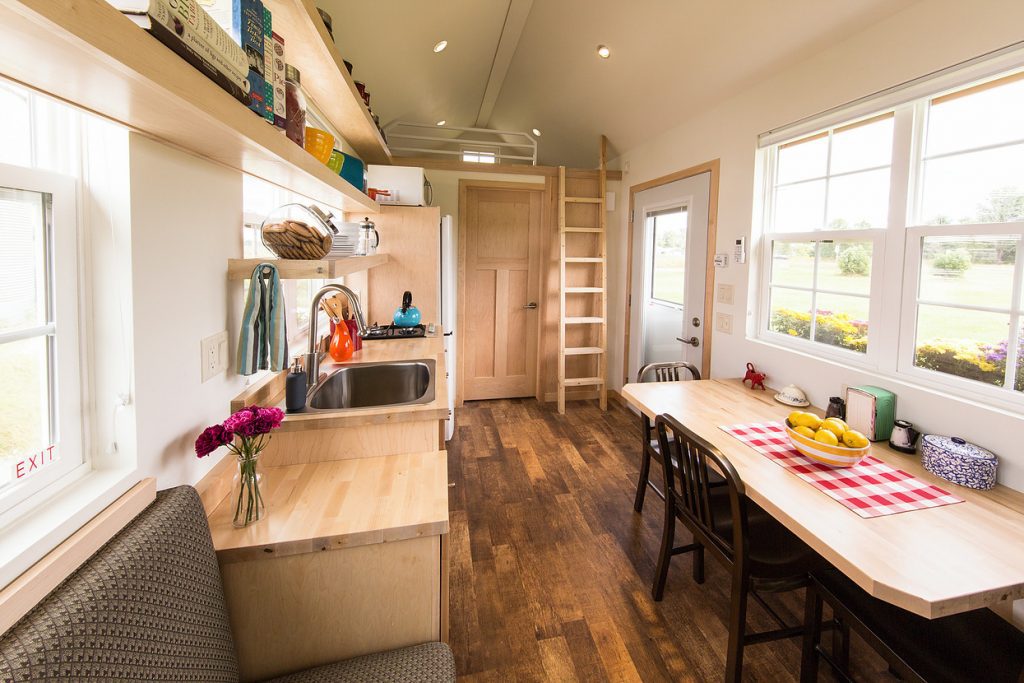Skift Take
While secondary cities are having their moments, rural regions remain largely undiscovered by higher-end tourists. That's partly because of a lack of quality accommodations. But thanks to the recent tiny home phenomenon, even remote areas can attract visitors looking for something different.
Time was, when it came to luxury, the glitzier and grander, the better. But today, upscale consumers are less concerned with bling and breadth, and more concerned about getting back to basics, albeit served up in a high-quality style.
That may be why the concept of tiny home vacations is taking off among high-end travelers. One of the prime examples of the phenomenon is in northwestern Wisconsin, adjacent to Canoe Bay, the only Relais & Chateaux in the Midwest.
Canoe Bay has been around for more than 25 years. Guests can opt to stay in the lodge, an inn or in cottages inspired by the design of Frank Lloyd Wright. There are also a few tiny homes, measuring in at 400 square feet, on property. A little over a year ago, owner Dan Dobrowski opened an adjacent facility called Canoe Bay ESCAPE Village, filled with tiny houses designed to meet the growing demand for small accommodations.
The homes at ESCAPE Village, which replicate Canoe Bay’s Prairie-style aesthetic, are available for short and long-term rental, and for purchase. Each tiny home (255 to 400 square feet) offers an open floor plan, a big bed, full-size appliances, a luxury kitchens and bath, and a panorama of windows. While the resort “is integrated with Canoe Bay (the elder) in terms of scenery and the unique wilderness setting on over 100 acres of lakes, wetlands and forest,” it is a separate entity.
In creating the village, Dobrowski has added an extra layer to another business of his: ESCAPE Homes. Since launching in 2014, ESCAPE Homes has become the country’s largest builders of tiny RV homes. That’s right, tiny homes are considered recreational vehicles. although they are built like small cottages, the structures are RVs by law, requiring no foundation.
“The term ‘tiny home’ doesn’t legally mean anything. The law has not caught up to tiny homes to legislate them. What we are building is RVIA-certified,” he said.
Tiny Homes in the Borscht Belt
Another example of the sensation is set in New York’s Catskills mountains. The former owner of a store called Think Big, which featured over-sized versions of everyday products, is the patriarch of the family behind A Tiny House Resort.
The resort opened in September, 2017 with four luxury tiny houses. Since that time, the property, located two hours from New York City, has added five more homes.
“The concept has great appeal to millennials who want to try out the concept of living smaller. Basically, it’s a new type of hotel where you get your own house,” said founder Bob Malkin.
Other amenities include a heated pool, a wellness tent with a soaking cedar tub, along with chickens and ducks and miniature goats (can goat yoga be far behind?). Future plans call for a cafe housed in an Airstream trailer. At the moment, guests can opt to cook at “home” or dine out in nearby towns. The only on-site food options are a small store and the hen house, where guests can grab freshly-laid eggs.
Meanwhile, back in Wisconsin, Dobrowski has hatched plans to spread the tiny home phenomenon across the country. While tiny home resorts can be a relatively inexpensive way for would-be hoteliers to enter the hospitality business, it’s still too much of an ask for most people. But Dobrowski has created a smaller entryway into the space.
Starting this year, landowners around the country have the option of becoming ESCAPE tiny home landlords. After inspecting a particular property for potential, ESCAPE Homes will deliver a 183-square-foot house on wheels right to the owner’s backyard.
“The program is open to anyone who has land and the right hook-ups. They supply the location, and we supply the buildings,” said Dobrowski.
Canoe Bay, which maintains ownership of the units, lists the properties on various home-sharing websites and then sends out checks for 40 percent of total booking revenue after fees are taken out. At the moment, Dobrowski has sent ESCAPE Homes across the country, from Atlanta to Oregon’s wine country.
Why go Small?
Tiny homes, along with other portable forms of boutique accommodation, can pave the way for high-end tourism to rural regions. For example, in Australia.
“There’s a boom across Victoria in portable luxury accommodation, including glamping and tiny houses, as operators opt for low impact, flexible accommodation [and] visitors [are] increasingly seeking out new experiences,” said Chris Gottaas, media and communications manager for Visit Victoria.
Visit Victoria has actually created a program using tiny portable dwellings to draw city folk out into the countryside. For the next four mouths, Wine Down Pop Up is sending up-cycled shipping containers cum luxury suites to three of the state’s premier wine regions.
By designing a portable program to get Aussies spending their dollars in the countryside, economic benefits spread to rural areas.
And that’s another advantage of the tiny/portable space phenomenon overall. It can be challenging for rural areas to attract high-end travelers, particularly because it is unlikely that a five-star hotel brand will plunk down a property in the middle of a cornfield. But as containers and tiny homes seed the countryside, rural areas have the potential to reap the benefits of luxury tourism.
The Daily Newsletter
Our daily coverage of the global travel industry. Written by editors and analysts from across Skift’s brands.
Have a confidential tip for Skift? Get in touch
Tags: australia, luxury, united states
Photo credit: The interior of an ESCAPE Homes property. Tiny homes are proving popular in the luxury segment. ESCAPE Homes
